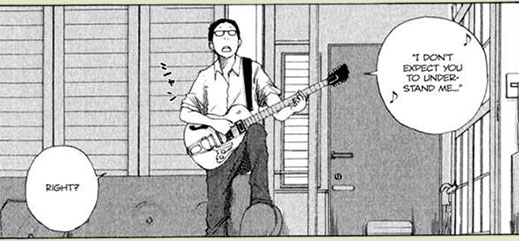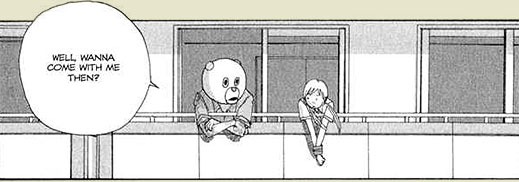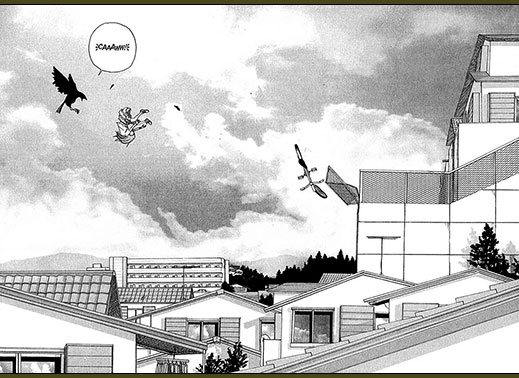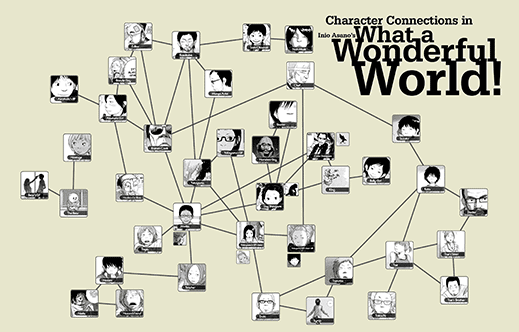What a Wonderful World!
Across the canon of the living dead, the spread of zombification has represented (or been said to represent) any number of social nightmares. In Invasion of the Body Snatchers, it was communism or consumerism or nothing at all, depending on whom you ask. In The Dawn of the Dead, Romero was said to have taken on consumerism. Or maybe he took on social hierarchies and the power struggles between the haves and the have-nots, between the whites and everyone else. Depends on who you ask. Still, Western visions of the undead plague have tended to revolve in some sense around materialism, around goods and what they mean to a society. Even latter-day hybrids combining zombie mythos and the Outbreak-style disease-control disaster story like 28 Days Later can be seen as treatments of the roles in which the masses are trapped by a consumerist society. Consumerism, materialism, and the fears that grow out of these broken social directions all find a bounty of indicators in Western zombie fiction, but what do the undead look like in other cultures?
Probably something a lot like those who succumb to the mysterious plague in Inio Asano's What a Wonderful World!

While American iterations of the myth generally sit pretty squarely in the realm of horror and are marked with gore and viscera, Asano's freshman work doesn't contain any of the stuff. It's not scary either, not in any traditional sense. In fact, until the final chapters, one might not even notice anything remotely zombie-ish about any of it. While there's death and those who fall prey to predators, there's no rotting flesh or buzzing flies (though, to be fair, there is a dragonfly in one scene). There's no mass panic and very few people hiding away in their apartments. All the same though, there is a zombifying plague afoot and I suppose it's even possible to read it as a reaction against the consumerist identities that Japanese society imposes on its citizens.
Apropos of its title, What a Wonderful World! (note the exclamatory!) unfolds as a two-disc concept album, weaving numerous characters and themes together to propose a multifaceted vision of 21st-century Japan and its future. Each only tangentially-related track (as Asano refers to his chapters) spins the reader closer to his narrative crescendo, nearer to the book's ideological index case. And Asano seems full-well attuned to the irony with which Louis Armstrong's 1968 single pushed its way into a history rife with domestic racism and international violence; Armstrong sings as if blind or naive to the frustrations of the real world (though he was anything but). Asano, who seems interested in painting a portrait of the State Of Things at the dawn of third-millennium Japan, posits beautiful scenery and relationships even over the corroding husk of civilization. A lot of the more melodramatic manga wallows in apocalyptic imagery in order to speak of a broken Japanese society, but Asano—with the same subtlety he uses when approaching the undead trope—doesn't feel the need for a bomb. He just shows things as they are, believing that to be apocalypse enough for any rational being.

Tonally, What a Wonderful World! hops around a bit from track to track. Sometimes vibrant, sometimes somber. Asano doesn't hit the reader over the head with any one message. Some might find what looks to be a mere collection of short stories to be a bit scattered, but by book's end I personally saw him driving everything toward a single goal—something that quietly turns in the face of what everything in the world is saying and demurely gives it the finger. (Asano's finale is not so raucous as the punk bands with which his story begins—those musicians have, after all, been cowed and brought to heel by oppressive structures of consumerist society.) In the end, he mimics Armstrong's own rejection of what is sensible to the eyes and proposes that rebellion is found in beauty and the careful tending of our relationships one with another. Asano's solution to the slack-jaws that society never tires of pumping out with assembly-line utility: stop being such a cog, look around, and let's all exclaim together, "What a Wonderful World!"
And then we get hit by a car.
Notes!
Note 1: The art in this thing is spectacular. A couple years ago, I hadn't heard of Asano. Then I had the good fortune to be skimming Tom Spurgeon's site (unfortunately I can't find where anymore) and saw this image:
 Behold the image that sold me on the series.
Behold the image that sold me on the series.
Click to embiggen.
That propelled me to check out what on earth could be the book that held such dynamic static images. And while What a Wonderful World! definitely has some of the marks of an early work, the seeds for some of the later wonderful images he's created are well-evident here.
Note 2: What a Wonderful World! boasts an unwieldy assortment of characters. From reading reviews and talking to friends, a common complaint revolves around the difficulty in telling one character from another and in remembering how different characters relate within the scope of the story. To help readers place all the characters accurately, I've provided this chart mapping out the connections or relationships between Asano's characters. (Note that instances of smaller images are in place to provide visual reference to a character's alternate visual identity—e.g. Horita with mohawk vs. Horita in the present). I've also provided references to characters of low importance simply so that readers might help distinguish them from other characters (e.g. the Bear's Girlfriend vs. the Bear's hostage).
And here's a second infographic. Same information, just prettier. And harder to read. Oh, and characters appear on the line in order of their appearance in the book. So there's that.
Good Ok Bad features reviews of comics, graphic novels, manga, et cetera using a rare and auspicious three-star rating system. Point systems are notoriously fiddly, so here it's been pared down to three simple possibilities:
3 Stars = Good
2 Stars = Ok
1 Star = Bad
I am Seth T. Hahne and these are my reviews.
Browse Reviews By
Other Features
- Best Books of the Year:
- Top 50 of 2024
- Top 50 of 2023
- Top 100 of 2020-22
- Top 75 of 2019
- Top 50 of 2018
- Top 75 of 2017
- Top 75 of 2016
- Top 75 of 2015
- Top 75 of 2014
- Top 35 of 2013
- Top 25 of 2012
- Top 10 of 2011
- Popular Sections:
- All-Time Top 500
- All the Boardgames I've Played
- All the Anime Series I've Seen
- All the Animated Films I've Seen
- Top 75 by Female Creators
- Kids Recommendations
- What I Read: A Reading Log
- Other Features:
- Bookclub Study Guides












